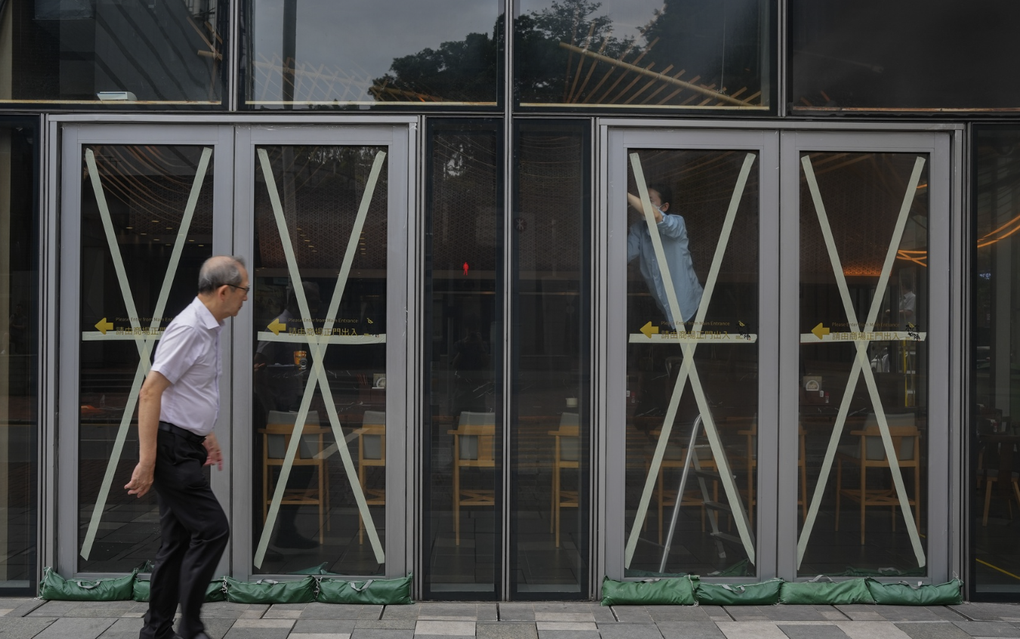Ragasa is the world's strongest storm since the beginning of the year, with winds of 270 km/h, and has been called the "king of storms" by the China Meteorological Administration. The storm formed on September 18 from a tropical depression off the coast of the Philippines, and three days later it increased to level 8 and became a super typhoon.
A reservoir burst in Hualien, eastern Taiwan, on September 23, causing massive flooding in a nearby town, killing at least 10 people. Rescuers are struggling to find more than 100 people still missing.
"As of the morning of September 24, at least 14 people have died, 18 people have been injured and 124 people are missing. Rescuers are searching for victims," said Lee Kuan-ting, an official from Hualien County.
Super typhoon Ragasa makes landfall in Taiwan (Source: AP)
“The water came in like a tsunami,” said a postman after the reservoir burst in Taiwan.
Local authorities confirmed that the reservoir had burst, releasing about 60 million tons of water. Hualien fire officials said floodwaters had temporarily risen to the second floor of homes in some areas, trapping more than 260 people.
Army armored vehicles were deployed to push through thick mud on the streets and go door to door to distribute water and instant noodles.
The storm also caused people in Hong Kong (China) to rush to shop, crowding into supermarkets, many shelves were empty and some places lined up for hours in anticipation of the store closing for two days. Many people also taped their windows to reduce the risk of broken glass.
The Hong Kong government has opened 49 emergency shelters, with 727 people taking refuge. However, the Hong Kong Stock Exchange has remained open, after changing its policy late last year to ensure trading regardless of weather conditions.
Chinese authorities have also closed schools and businesses in at least 10 cities. Emergency management agencies in China's tech hub said that except for emergency rescue workers and those ensuring people's livelihoods, others should not go out unless necessary.

A restaurant in Hong Kong tapes its windows in preparation for super typhoon Ragasa (Photo: HKFP).
Construction experts warn the city could face millions of dollars in damage, especially from repairing damaged glass buildings.
Johnnie Chan Chi-kau, representative of the Hong Kong Property Management Association, stressed that strong winds and flying objects could shatter glass panels, posing a serious safety risk. Repairs could take half a year to a year, with the cost for each glass panel running into tens of thousands of dollars.
Kenny Tse Chi-kin, chairman of the Building Policy Committee of the Hong Kong Institute of Surveyors, said the total cost of repairs could run into millions of dollars and that the work would have to wait for favorable weather conditions. He called on residents to conduct regular inspections of buildings using glass facades, as extreme weather events become more frequent.
Source: https://dantri.com.vn/kinh-doanh/vua-bao-ragasa-quan-thao-trung-quoc-du-doi-thiet-hai-hang-tram-trieu-usd-20250924135354591.htm




![[Photo] Prime Minister Pham Minh Chinh attends the groundbreaking ceremony of two key projects in Hai Phong city](https://vphoto.vietnam.vn/thumb/1200x675/vietnam/resource/IMAGE/2025/9/27/6adba56d5d94403093a074ac6496ec9d)






































































































Comment (0)